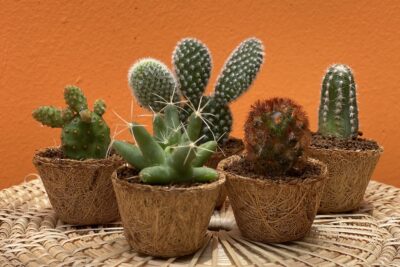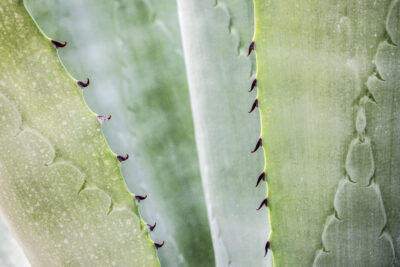
Challenging Succulents: Types that Require Extra Care to Thrive

Succulents are popular plants known for their ability to store water in their fleshy leaves and stems. They have gained immense popularity in recent years due to their unique shapes, vibrant colors, and low-maintenance nature. However, not all succulents are created equal when it comes to their care requirements. Some types of succulents require extra attention and care in order to thrive and reach their full potential.
We will explore some of the challenging succulents that require extra care to thrive. We will discuss the specific care needs of these plants, including their lighting, watering, and temperature requirements. Additionally, we will provide tips and techniques to help you successfully grow and nurture these demanding succulents. Whether you are a seasoned succulent enthusiast looking for a new challenge or a beginner wanting to expand your succulent collection, this article will provide you with valuable insights and guidance to help you care for these unique and fascinating plants.
- Choose succulents that prefer bright, indirect light
- Provide well-draining soil to prevent root rot
- Water sparingly, only when the soil is completely dry
- Avoid overwatering, as succulents are prone to rot
- Protect succulents from extreme temperatures, both hot and cold
- Monitor for pests and treat them promptly
- Consider using a fertilizer formulated for succulents
- Repot succulents as needed to provide ample space for growth
- Avoid touching or handling succulents too often, as this can damage their leaves
- Keep an eye out for signs of stress or disease and take appropriate action
- Frequently Asked Questions
Choose succulents that prefer bright, indirect light
When it comes to succulents, most people think of hardy plants that can survive in almost any condition. However, there are some types of succulents that require extra care and attention to thrive. One of the key factors to consider is the amount of light these plants receive.
While most succulents are known for their ability to tolerate direct sunlight, there are certain types that prefer bright, indirect light. These succulents are not suited for intense sun exposure and can suffer from sunburn or scorching if placed in direct sunlight.
To ensure the proper growth and health of succulents that prefer bright, indirect light, it is essential to place them in a location where they receive filtered or diffused light. This can be achieved by placing them near a window with sheer curtains or in a spot where they are shielded from direct sunlight by other plants or objects.
It's important to note that succulents still need a good amount of light to thrive, even if they prefer indirect light. Therefore, make sure to provide them with enough brightness for at least a few hours each day. If you notice that the succulents are stretching or leaning towards the light source, it might be an indication that they are not receiving enough light.
 The Proper Depth for Planting Succulents in the Ground: A Guide
The Proper Depth for Planting Succulents in the Ground: A GuideSome common succulents that prefer bright, indirect light include Haworthia, Gasteria, and certain varieties of Echeveria. These plants have adapted to shady environments and thrive in lower light conditions compared to their sun-loving counterparts.
By choosing succulents that prefer bright, indirect light and providing them with the right amount of illumination, you can ensure their proper growth and prevent any damage caused by excessive sunlight. Remember to monitor their light requirements and adjust their placement accordingly to help them thrive.
Provide well-draining soil to prevent root rot
Succulents are known for their ability to store water in their leaves, stems, and roots, allowing them to survive in arid conditions. However, not all succulents are created equal when it comes to their water requirements. Some types of succulents require extra care and attention to thrive, particularly when it comes to their soil conditions.
One of the most important factors to consider when growing challenging succulents is the type of soil you use. These plants need a well-draining soil mixture to prevent root rot, which can quickly lead to their demise.
To provide the optimal soil conditions for your challenging succulents, consider using a mixture that contains a combination of gritty materials such as perlite, pumice, or coarse sand. These additives will help create air pockets in the soil, allowing excess water to drain away quickly.
When potting your succulents, be sure to choose a container with drainage holes to further aid in preventing waterlogged soil. Avoid using pots without drainage, as the excess water will have nowhere to go and can lead to root rot.
 How frequently should I apply Miracle-Gro Succulent Plant Food?
How frequently should I apply Miracle-Gro Succulent Plant Food?Additionally, it's essential to water your challenging succulents sparingly. Overwatering is a common mistake that can harm these plants. Instead, allow the soil to dry out completely between waterings. This will help prevent waterlogged conditions and promote healthy root growth.
By providing well-draining soil and practicing careful watering habits, you can create the ideal conditions for your challenging succulents to thrive. Remember, each succulent variety has its own unique requirements, so it's essential to research and understand the specific needs of the succulents you are growing.
Water sparingly, only when the soil is completely dry
When it comes to succulents, many people assume that they are low-maintenance plants that thrive on neglect. While this may be true for some succulent varieties, there are certain types that require extra care and attention to truly thrive. One of the key factors in successfully growing these challenging succulents is to water them sparingly, only when the soil is completely dry.
Succulents are known for their ability to store water in their leaves and stems, enabling them to survive in arid conditions. However, some species are more sensitive to overwatering and are prone to root rot if their roots sit in wet soil for too long. To prevent this, it is crucial to wait until the soil is completely dry before watering.
One way to determine if it's time to water your challenging succulent is to check the moisture level of the soil. Stick your finger about an inch into the soil, and if it feels dry, it's time to water. If it still feels slightly moist, hold off on watering for a few more days. Remember, it's better to underwater than to overwater when it comes to these types of succulents.
Additionally, it's important to use well-draining soil for your challenging succulents. This allows excess water to flow through the soil, preventing it from sitting around the roots and causing damage. You can either purchase a pre-made succulent mix or create your own by combining regular potting soil with coarse sand or perlite.
When watering your challenging succulents, it's best to use the soak and dry method. This means thoroughly watering the soil until water drains out of the pot's drainage holes and then allowing the soil to dry out completely before watering again. Avoid misting or lightly spraying the leaves of these succulents, as it can lead to fungal diseases.
 Watering Succulents After Repotting: What You Need to Know
Watering Succulents After Repotting: What You Need to KnowBy following these watering guidelines and providing the right conditions, you can give your challenging succulents the care they need to thrive. Remember, every succulent is unique, so it's essential to research the specific care requirements of the succulent varieties you have to ensure their optimal growth and health.
Avoid overwatering, as succulents are prone to rot
Succulents are known for their ability to store water in their fleshy leaves and stems, making them extremely adept at surviving in arid conditions. However, this doesn't mean that they thrive on excessive watering. In fact, overwatering is one of the most common mistakes made when caring for succulents, as it can lead to root rot and ultimately kill the plant.
To avoid overwatering your succulents, it is important to understand their watering needs. These plants prefer a well-draining soil mix that allows water to quickly pass through, preventing it from sitting around the roots for too long. Using a mixture of cactus soil and perlite or pumice can help achieve the desired drainage.
Additionally, it is crucial to establish a watering schedule that allows the soil to dry out between waterings. A general rule of thumb is to water succulents thoroughly, ensuring that the water reaches the roots, and then wait until the soil is completely dry before watering again. This may vary depending on environmental factors such as temperature and humidity, so it's important to observe your plants closely and adjust the watering frequency accordingly.
Furthermore, it's important to note that different succulent varieties have varying water requirements. While some may tolerate more frequent watering, others may prefer a drier environment. It's always a good idea to research the specific needs of the succulent species you are caring for to ensure optimal care.
Lastly, remember that succulents are adapted to survive in harsh conditions, and they can withstand periods of drought. It's better to underwater than to overwater, as succulents are more likely to recover from dehydration than from excessive moisture.
 Succulent Care: A Guide to Cliff Cotyledon and Crassulaceae
Succulent Care: A Guide to Cliff Cotyledon and CrassulaceaeKey points to remember:
- Use a well-draining soil mix to prevent water from sitting around the roots.
- Establish a watering schedule that allows the soil to dry out between waterings.
- Take into account the specific water requirements of the succulent species you are caring for.
- Err on the side of underwatering rather than overwatering.
By following these guidelines and avoiding overwatering, you can ensure that your succulents thrive and remain healthy for years to come.
Protect succulents from extreme temperatures, both hot and cold
When it comes to succulents, they are often celebrated for their ability to thrive in harsh conditions. However, not all succulents are created equal. Some varieties require extra care and attention, especially when it comes to extreme temperatures.
Hot temperatures: While succulents are known for their drought tolerance, prolonged exposure to extreme heat can be detrimental to their health. To protect your succulents from scorching temperatures, consider providing them with some shade during the hottest parts of the day. This can be achieved by placing them under a patio umbrella or providing a temporary shade cloth. Additionally, make sure to water them more frequently during heatwaves to prevent dehydration.
Cold temperatures: Succulents are typically not frost-tolerant, and prolonged exposure to freezing temperatures can lead to irreversible damage. If you live in an area with cold winters, it's crucial to bring your sensitive succulents indoors or provide them with proper protection. Consider using frost blankets, which are designed to insulate plants and shield them from freezing temperatures. Additionally, avoid watering your succulents during freezing conditions as the excess moisture can freeze and damage their delicate tissues.
To ensure the survival and thriving of your succulents, it's crucial to monitor the temperature fluctuations in your area and adjust your care routine accordingly. By providing the right protection from extreme temperatures, you can help your challenging succulents thrive and maintain their beauty.
 Can Succulents Be Revived After Drying Out?
Can Succulents Be Revived After Drying Out?Monitor for pests and treat them promptly
Monitor for pests and treat them promptly
One of the challenges that succulent enthusiasts often encounter is dealing with pests. While succulents are generally known for their resilience and ability to withstand harsh conditions, they are not immune to infestations. Pests such as mealybugs, aphids, and spider mites can cause significant damage to these plants if left unchecked.
To ensure the health and vitality of your succulents, it is crucial to regularly monitor them for any signs of pest infestation. Inspect the leaves, stems, and soil for any unusual markings, discoloration, or webbing. Additionally, keep an eye out for small insects or eggs that may be hiding in the foliage.
If you notice any signs of pests, it is essential to take immediate action. Treat infested plants promptly to prevent the pests from spreading to other succulents in your collection. There are various methods and products available to combat different types of pests, including organic and chemical options.
Some effective treatments include using neem oil, insecticidal soaps, or a mixture of water and rubbing alcohol to eliminate pests. Remember to follow the instructions provided with the chosen treatment method and apply it as directed. It is also advisable to isolate the infested plants from the rest of your collection until the pests are eradicated.
Regularly monitoring and treating any pest infestations will help ensure that your succulents can thrive in a healthy and pest-free environment.
 Can Repotting Revive a Dead Succulent?
Can Repotting Revive a Dead Succulent?Consider using a fertilizer formulated for succulents
Succulents are known for their ability to thrive in harsh conditions with minimal care. However, there are some types of succulents that require extra attention and care to reach their full potential. One factor that can greatly contribute to their growth and overall health is the type of fertilizer used.
When it comes to choosing a fertilizer for challenging succulents, it is important to opt for a formula specifically designed for their unique needs. These specialized fertilizers contain the right balance of nutrients that succulents require to flourish.
One key nutrient to look for in a succulent fertilizer is nitrogen. Nitrogen is essential for promoting healthy foliage growth and vibrant colors in succulents. However, it is crucial to strike a balance, as too much nitrogen can lead to excessive leaf growth, making the plants more susceptible to damage.
In addition to nitrogen, succulents also require phosphorus and potassium for optimal growth. Phosphorus aids in root development and overall plant strength, while potassium helps with water absorption and drought tolerance. A fertilizer with a balanced NPK (nitrogen, phosphorus, and potassium) ratio is ideal for challenging succulents.
When applying fertilizer to your succulents, it is important to follow the instructions provided on the packaging. Over-fertilizing can cause salt buildup in the soil, leading to root damage and other issues. It is generally recommended to fertilize succulents sparingly, typically once or twice a year during the growing season.
Remember, different types of succulents may have varying fertilizer requirements, so it is always a good idea to do some research on the specific needs of your plants. Some succulents may require more frequent or less frequent fertilization, depending on their growth rate and environmental conditions.
 How to Safely Ship a Succulent: Tips for Mailing Plants
How to Safely Ship a Succulent: Tips for Mailing PlantsWhen caring for challenging succulents, using a fertilizer formulated specifically for their needs can make a significant difference in their overall health and vitality. By providing the right nutrients in the right amounts, you can help your succulents thrive and showcase their unique beauty.
Repot succulents as needed to provide ample space for growth
Succulents are known for their ability to thrive in harsh conditions and require minimal care. However, there are certain types of succulents that demand extra attention and care to truly flourish. One essential step in ensuring the healthy growth of these challenging succulents is repotting them as needed.
When it comes to repotting succulents, it's important to provide ample space for their roots to grow and spread. As these challenging succulents often have more extensive root systems, they require larger pots to accommodate their growth. Repotting not only allows for increased root development but also provides fresh, well-draining soil that promotes healthy growth.
Signs it's time to repot your challenging succulents:
- Roots outgrowing the pot: If you notice that the roots of your succulent are tightly packed and starting to protrude out of the drainage holes, it's a clear indication that it's time for a larger pot.
- Stunted or slow growth: If your succulent has been showing minimal or no signs of growth despite being adequately watered and receiving sufficient sunlight, it could be a sign that its current pot is too small to support its growth.
- Waterlogged soil: Overwatering can lead to root rot and other fungal diseases. If you consistently find that the soil in the pot remains wet for an extended period, it's a sign that the pot's size is not allowing proper drainage.
When repotting your challenging succulents, follow these steps to ensure their well-being:
- Select the right pot: Choose a pot that is wider and deeper than the current one to provide sufficient space for root growth. Additionally, ensure that the pot has drainage holes to prevent waterlogging.
- Prepare the soil: Use a well-draining succulent potting mix or create a mixture of regular potting soil and perlite or sand for enhanced drainage.
- Gently remove the succulent: Carefully loosen the soil around the succulent and gently lift it out of the current pot, taking care not to damage the roots.
- Remove excess soil: Shake off any excess soil from the roots, ensuring not to remove all the soil as it can cause damage to the plant.
- Place in the new pot: Position the succulent in the center of the new pot, ensuring that it sits at the same depth as before. Fill the rest of the pot with prepared soil, gently pressing it around the roots.
- Allow time to adjust: After repotting, avoid watering your succulent for a few days to allow it to adjust to its new environment.
By giving your challenging succulents the space they need to grow, you are setting them up for success. Regular repotting, when needed, will ensure that these types of succulents have the best chance to thrive and continue to add beauty to your collection.
Avoid touching or handling succulents too often, as this can damage their leaves
When it comes to succulents, most people assume they are low-maintenance plants that can thrive with minimal effort. While this may be true for many types of succulents, there are certain varieties that require extra care and attention to reach their full potential. One crucial aspect to keep in mind is to avoid touching or handling these delicate plants too often, as this can cause damage to their leaves.
Succulents have thick, fleshy leaves that store water, allowing them to survive in arid conditions. However, these leaves are also highly susceptible to damage. When you handle a succulent, the pressure applied by your fingers can cause the leaves to break or bruise. Even a gentle touch can leave behind unsightly marks or cause the leaves to detach from the main stem, hindering the plant's growth.
 Succulent Transplant Shock: Causes, Symptoms, and Solutions
Succulent Transplant Shock: Causes, Symptoms, and SolutionsTo prevent such damage, it is best to limit your interaction with these delicate succulents. Instead, admire their beauty from a distance and resist the temptation to touch them regularly. By minimizing physical contact, you give the plant a better chance to thrive and maintain its overall health.
Furthermore, it is essential to be mindful of the way you hold and transport succulents, especially when repotting or moving them to different locations. Always support the base of the plant while gently handling it, ensuring that the leaves remain intact and undamaged.
If you absolutely must touch your succulents, be sure to wash your hands thoroughly beforehand. Oils, lotions, or any substances on your hands can transfer to the leaves, potentially harming the plant. Also, avoid touching the leaves when they are wet, as they are more susceptible to damage in this state.
Remember, succulents are unique and diverse, with each type requiring specific care. Whether it's avoiding excessive handling or providing the right amount of sunlight and water, understanding the needs of your succulents is crucial for their long-term health and growth.
Keep an eye out for signs of stress or disease and take appropriate action
When it comes to succulents, many people think they are low-maintenance plants that require little attention. While this may be true for some types of succulents, there are certain varieties that need extra care to thrive. It's important to keep an eye out for signs of stress or disease in these challenging succulents and take appropriate action.
1. Lithops (Living Stones)
Lithops, also known as living stones, are small, stemless succulents that mimic the appearance of stones or pebbles. These unique plants are native to South Africa and require specific conditions to thrive. One of the biggest challenges with Lithops is providing the right amount of water. They have a unique growth cycle that includes a period of dormancy, during which they should receive very little to no water. Overwatering can cause their delicate roots to rot. It's crucial to monitor the moisture level in their soil and only water them when completely dry.
2. Echeveria 'Black Prince'
The Echeveria 'Black Prince' is a stunning succulent with dark, almost black leaves. While it may seem like a resilient plant, it can be quite challenging to keep it healthy. One of the main issues with this variety is sunburn. Despite its dark color, it is sensitive to intense sunlight and can develop brown or black spots when exposed to too much direct sun. To prevent sunburn, provide partial shade or filtered sunlight, especially during the hottest hours of the day. Additionally, 'Black Prince' requires well-draining soil to avoid root rot.
 Caring for Succulents Planted in a Fire Stick: A Comprehensive Guide
Caring for Succulents Planted in a Fire Stick: A Comprehensive Guide3. Huernia
Huernia is a genus of succulent plants that belong to the Apocynaceae family. These plants have peculiar star-shaped flowers and are known for their foul odor, which attracts flies for pollination. One of the challenges in caring for Huernia is providing the right temperature. These succulents prefer warm temperatures during the growing season but require cooler temperatures during their winter dormancy period. It's important to mimic their natural habitat by adjusting the temperature accordingly to ensure their overall health and blooming potential.
4. Stapelia Gigantea
Stapelia Gigantea, also known as the Carrion Flower, is another challenging succulent to care for. Its unique feature is its large, star-shaped flowers that emit a strong odor resembling rotting flesh. One of the main difficulties in keeping this plant healthy is providing the right amount of water. Overwatering can lead to root rot, while underwatering can cause the plant to wither. It's crucial to find the right balance and water them sparingly, allowing the soil to dry out between waterings. Additionally, this species prefers bright, indirect light rather than direct sunlight.
Remember that each succulent has its own specific care requirements. By paying attention to signs of stress or disease and taking appropriate action, you can help these challenging succulents thrive and add unique beauty to your plant collection.
Frequently Asked Questions
1. What are succulents?
Succulents are a type of plants that store water in their leaves, stems, or roots, allowing them to survive in arid conditions.
2. Are all succulents easy to care for?
No, not all succulents are easy to care for. Some succulent species require extra attention and care to thrive in specific conditions.
3. What are some examples of challenging succulents?
Some examples of challenging succulents include Lithops, Haworthia truncata, and Adenium obesum. These plants have specific requirements and are more sensitive to environmental factors.
4. What care tips should I keep in mind for challenging succulents?
For challenging succulents, it's important to provide the right amount of light, water, and temperature conditions. Additionally, using well-draining soil and avoiding overwatering are crucial for their health.
 Succulent Care 101: Troubleshooting Brown Tips and Effective Fixes
Succulent Care 101: Troubleshooting Brown Tips and Effective FixesIf you want to read more articles similar to Challenging Succulents: Types that Require Extra Care to Thrive, you can visit the Care and Maintenance category.






You Must Read